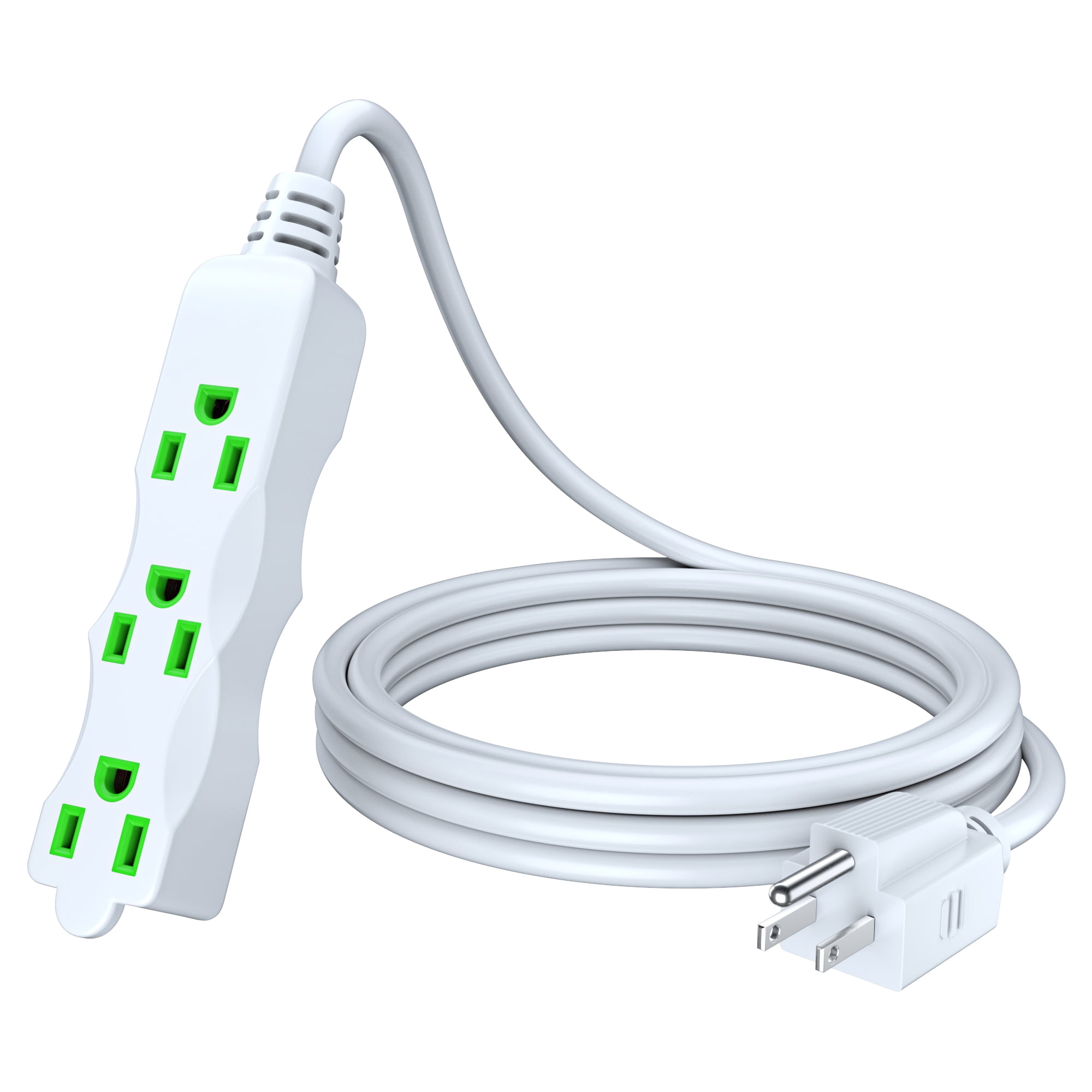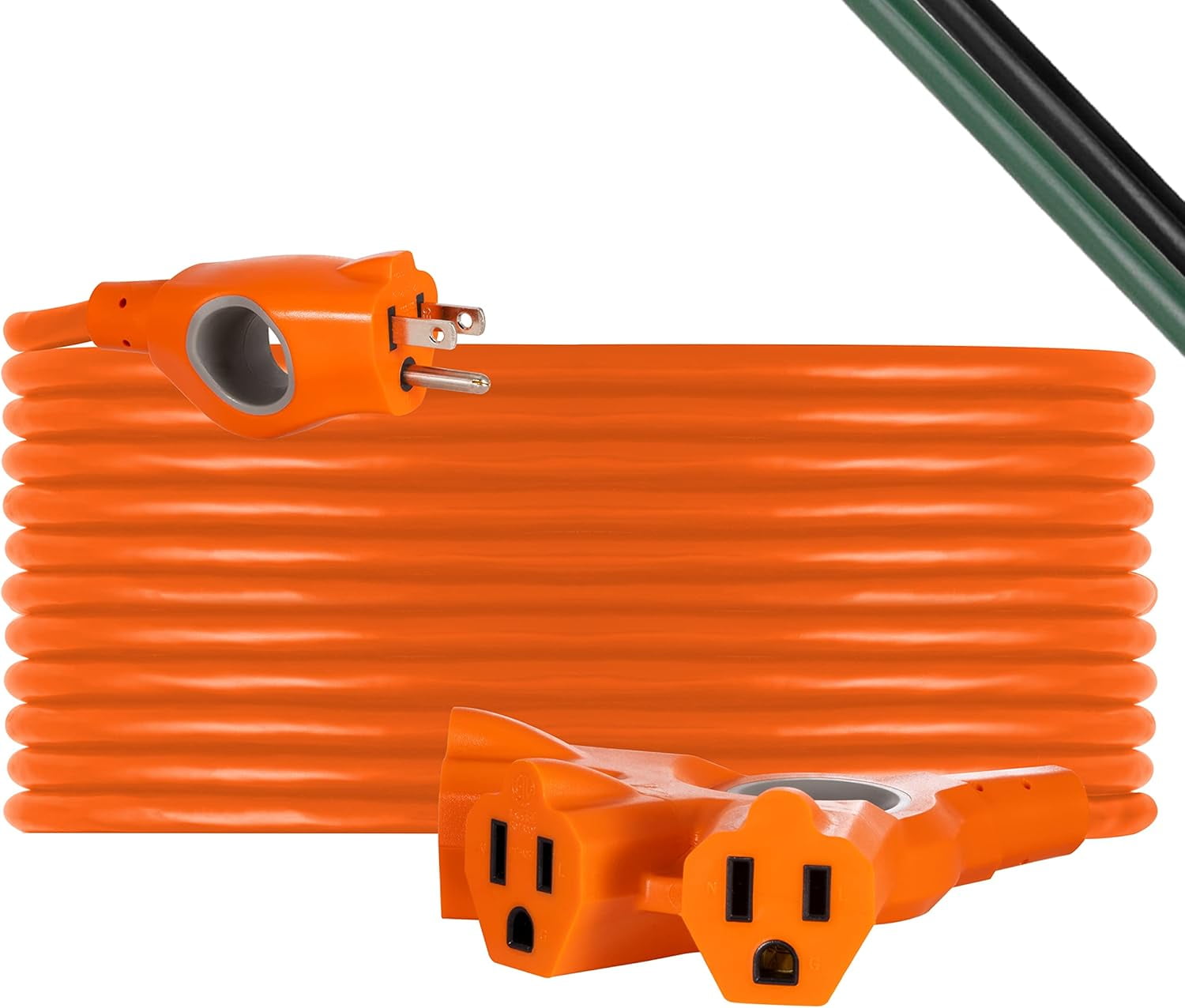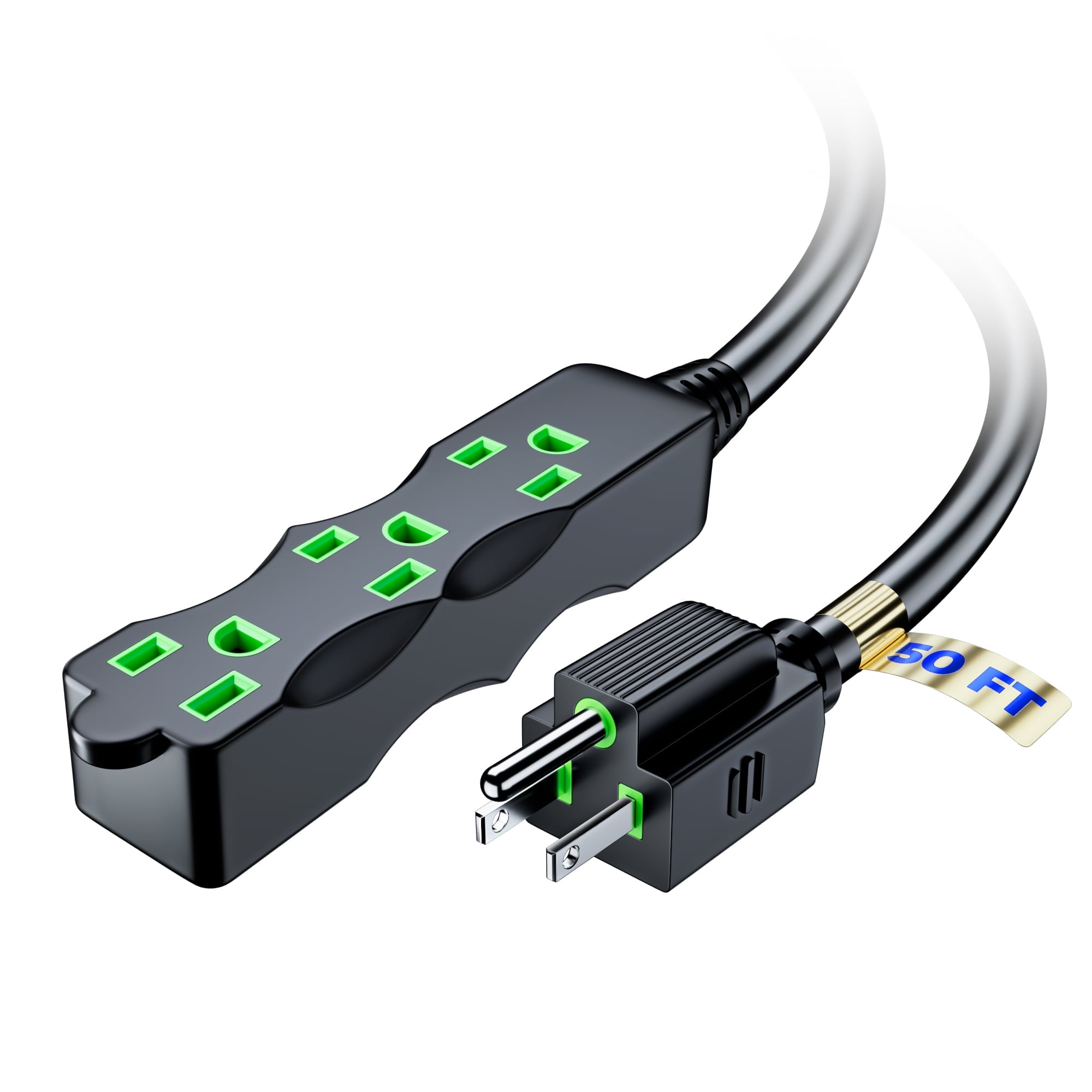3 Prong Extension Cord With Multiple Outlets

The ubiquitous 3-prong extension cord with multiple outlets, a staple in homes, offices, and workshops, is facing increased scrutiny regarding safety standards and potential fire hazards. This comes as consumer safety organizations and regulatory bodies ramp up efforts to educate the public on responsible usage and the importance of purchasing certified products.
This article examines the significance of these extension cords, delving into the specifics of their design, common usage scenarios, potential dangers, and the ongoing efforts to ensure consumer safety and prevent accidents related to their misuse.
The Ubiquitous Power Hub
The 3-prong extension cord with multiple outlets, often called a power strip, offers a convenient solution for expanding electrical access. It allows users to power multiple devices from a single wall outlet, addressing the common problem of insufficient outlets in many buildings.
These cords are widely available in various lengths, outlet configurations, and amperage ratings, catering to diverse needs, from powering a simple desk setup to managing multiple tools in a workshop.
Understanding the Design
A typical 3-prong extension cord comprises a flexible insulated cable, a molded plug with three prongs (hot, neutral, and ground), and a plastic housing containing multiple electrical outlets. The ground prong is a crucial safety feature designed to provide a path for stray electrical currents, minimizing the risk of electric shock.
Many models also include a circuit breaker, which automatically shuts off power if the cord is overloaded, preventing overheating and potential fires. The amperage rating, clearly marked on the cord, indicates the maximum amount of electrical current the cord can safely handle.
Common Uses and Potential Dangers
These extension cords are commonly used to power computers, lamps, televisions, and other electronics in homes and offices. They are also popular in workshops and construction sites for powering tools and equipment.
However, improper use can lead to serious hazards, including overheating, electrical shock, and fires. Overloading the cord by plugging in too many devices that draw excessive current is a common cause of these problems.
Using extension cords in damp or wet environments increases the risk of electric shock. Damaged cords, with frayed wires or cracked insulation, also pose a significant risk.
Safety Standards and Certification
Recognizing the potential dangers, several organizations have established safety standards and certification programs for extension cords. Underwriters Laboratories (UL) and Intertek (ETL) are two prominent organizations that independently test and certify electrical products.
Cords bearing the UL or ETL listing mark have been rigorously tested to meet specific safety requirements, providing assurance to consumers. The National Electrical Code (NEC), a widely adopted standard for electrical installations, also provides guidelines for the safe use of extension cords.
Best Practices for Safe Usage
To minimize risks, consumers should adhere to several best practices when using 3-prong extension cords with multiple outlets. Always choose a cord with an amperage rating that meets or exceeds the combined amperage requirements of the devices plugged into it.
Avoid overloading the cord by plugging in too many high-powered devices. Never cover the cord with rugs or furniture, as this can trap heat and increase the risk of fire. Regularly inspect cords for damage, and replace them immediately if any damage is found.
It is important to note that extension cords are intended for temporary use. For permanent solutions to insufficient outlets, consider installing additional outlets by a qualified electrician. Avoid using extension cords in wet or damp locations unless they are specifically designed for outdoor use.
The Human Impact
The consequences of extension cord-related accidents can be devastating. Each year, numerous injuries and fatalities are attributed to electrical fires caused by overloaded or damaged extension cords.
A recent report by the Consumer Product Safety Commission (CPSC) highlighted a significant increase in electrical fires linked to extension cord misuse. This underscores the importance of ongoing education and awareness campaigns to promote safe usage practices.
Families who have lost loved ones or suffered property damage due to electrical fires often share their stories to raise awareness and prevent similar tragedies from happening to others.
One such story involves a family whose home was destroyed by a fire that started due to an overloaded extension cord powering multiple space heaters. The family emphasized the importance of taking electrical safety seriously and urged others to invest in quality extension cords and follow safety guidelines.
Ongoing Efforts and Future Directions
Consumer safety organizations and regulatory bodies are actively working to improve the safety of extension cords and educate the public on responsible usage. This includes developing stricter safety standards, conducting public awareness campaigns, and enforcing regulations.
Technological advancements are also playing a role, with the development of "smart" extension cords that can monitor power usage and automatically shut off if overloaded. These innovative products offer an additional layer of safety and convenience.
Continued collaboration between manufacturers, regulatory bodies, and consumer safety organizations is essential to ensuring the safe and responsible use of 3-prong extension cords with multiple outlets.
By adhering to safety standards, promoting awareness, and embracing technological advancements, we can minimize the risks associated with these ubiquitous devices and create a safer environment for all.


















